Managing multiple domain names can seem like a daunting task, but it’s a strategy many businesses consider to protect their brand, target diverse audiences, and expand their online reach.
From my years working in SEO and web hosting, I’ve seen firsthand how juggling several domains can either boost your presence or complicate your digital efforts if not handled carefully.
In this article, I’ll walk you through the pros and cons of managing multiple domains, share practical examples, and offer guidance on when it’s worth the effort and when sticking to a single domain might be smarter.
What does managing multiple domain names mean?
Managing multiple domain names refers to owning and operating more than one domain name that ties back to your business or brand.
These domains can be used in various ways. Some may redirect traffic to your main site, others might host entirely separate content, and some could serve strategic purposes like brand protection or market targeting.
Now, it’s important to distinguish between multiple domains, subdomains, and subdirectories.
Managing multiple domain names is a strategic move for brand protection, market reach, and SEO. Knowing how domains differ from subdomains and subdirectories is key to using them effectively.
While multiple domains are entirely separate web addresses (think mybrand.com and mybrand.net), subdomains are extensions of a single domain (like blog.mybrand.com), and subdirectories are folders within a site’s architecture (such as mybrand.com/blog).
In practice, managing multiple domains can range from something as simple as securing alternative TLDs (.com, .in, .net, etc.) to operating standalone websites for distinct product lines or regional markets.
You might use 301 redirects to point multiple domains to your primary site, which is great for capturing misspellings or alternative branding. Or you might choose to host separate websites for different target audiences or SEO strategies.
Each approach comes with its own set of opportunities and pitfalls, and understanding the difference is key to building a smart domain strategy.
Real-world examples of managing multiple domain names
Let’s take a cue from the big guns.
Microsoft owns countless domains beyond its flagship microsoft.com, like office.com, xbox.com, and even defensive domains meant to catch typos or prevent brand hijacking.
Apple, Nike, and other global giants do the same, ensuring no opportunistic third party swoops in to snag a variation of their brand name.
These companies aren’t flexing with domain portfolios. They’re safeguarding their digital real estate.
And in the SEO world? Agencies often run microsites for specific services or regions to capture niche traffic. These are not meant to be vanity URLs. They’re strategic, measurable, and when executed properly, downright effective.
Benefits of managing multiple domains
1. Brand protection
Let me be blunt: cybersquatters are real and they’re quick to pounce.
I’ve worked with clients who learned the hard way after discovering someone else had snapped up a misspelled version of their brand name or their .net and .org extensions.
Owning multiple variations of your primary domain, such as the .com, .net, .org, plus any country-specific TLDs, is one of the most cost-effective ways to stay one step ahead.
One of the most prominent examples in India is ride-hailing app Ola. They owned the ola.in domain, but not ola.com. Despite multiple attempts to acquire it (including making offers reportedly exceeding $1 million), their efforts did not succeed. They subsequently filed a UDRP (Uniform Domain-Name Dispute-Resolution Policy) complaint, seeking transfer of the domain. However, a WIPO arbitration panel ruled against Ola as they found that the domain registration predated Ola's trademark and brand launch. On top of that, the original registrant had legitimate rights or interests, simply parking the domain with generic ads, and there was no evidence of bad-faith registration.
If a large company can face all these hurdles in trying to obtain a critical domain name after it scales, similar scenarios can happen to any company. Trust me, it’s a much smoother ride when you take domain protection seriously from the get-go.
Here are some quick tips:
- Register common TLDs – secure your brand with .com, .net, .org, and country-specific extensions (.in, .co.uk,.ca, etc.)
- Buy typo variants – protect against common misspellings or keyboard errors (e.g., gooogle.com, g0ogle.com)
- Include plural/singular versions – cover both forms (e.g., brand.com and brands.com)
- Grab hyphenated versions – in case users search with hyphens (e.g., your-brand.com)
- Register keyword extensions – add relevant keywords your audience may search for (e.g., brandapp.com, brandstore.com)
- Secure related industries – buy domain names relevant to your verticals (e.g., brandtech.com, brandmedia.com)
- Cover local spellings – register regional variations (e.g., colourbrand.com vs. colorbrand.com)
- Get acronym/short form domains – protect abbreviated versions of your brand (e.g., TCB.com for The Cool Brand)
- Register brand + product names – safeguard your product names combined with your brand (e.g., brandwidget.com)
- Consider defensive domains – preemptively buy domains that could be used negatively (e.g., brandcomplaints.com)
2. Audience targeting and market segmentation
Different audiences call for different messages.
Managing multiple domains gives you the flexibility to serve highly targeted experiences without overcomplicating your main site.
Think of a company that sells both software and consulting services. Splitting those offerings across two distinct domains can make each message clearer, more focused, and more relevant.
I’ve helped businesses operating in both India and UK use country-code domains like .in and .co.uk to align better with local search results.
Beyond just changing the language or currency, it's a signal to search engines and users alike that the content is designed specifically for them.
3. Improved keyword reach
Let’s talk about exact match domains (EMDs). When done right, they can be a magnet for highly targeted traffic.
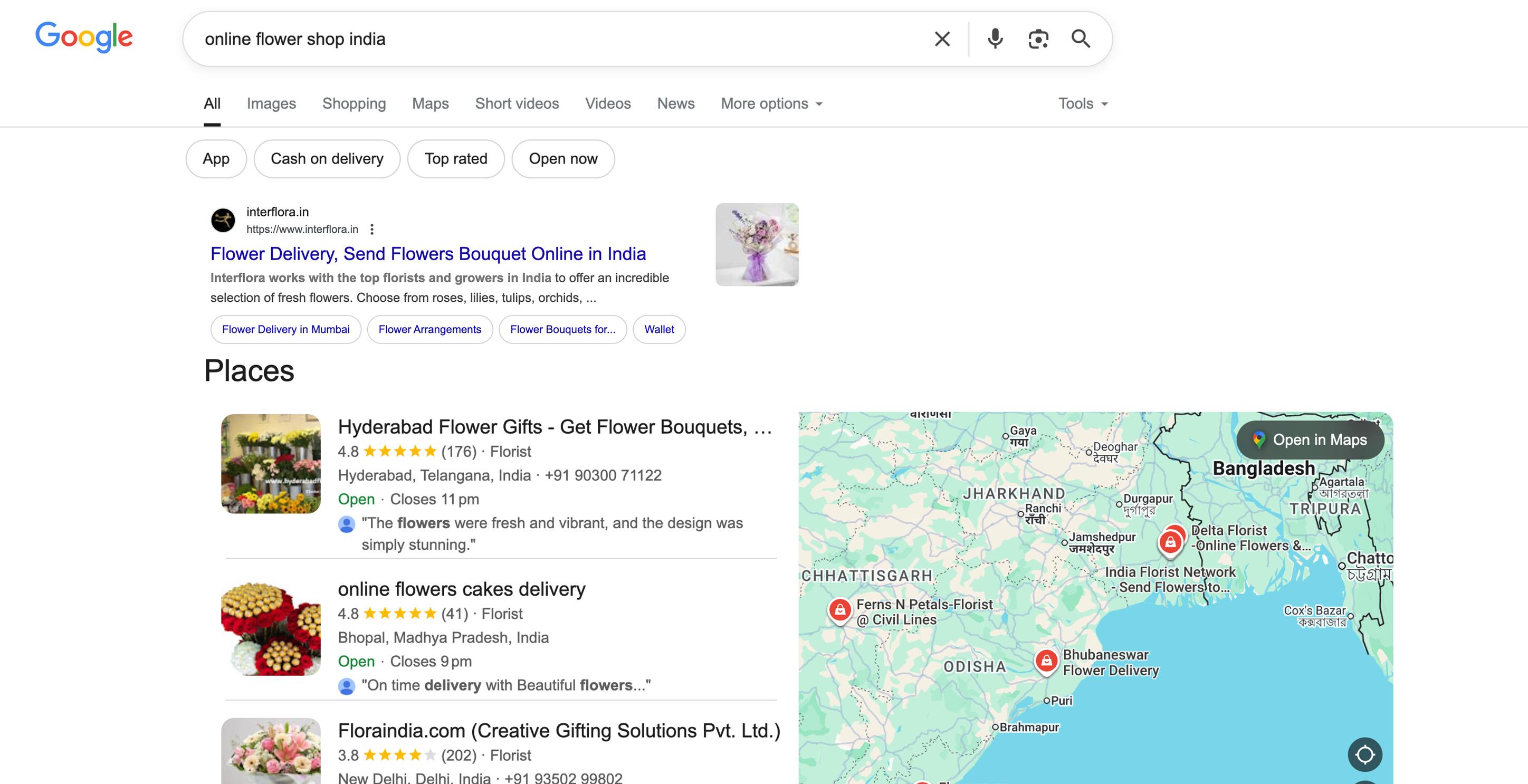
These keyword-rich domains aren’t the golden ticket they once were, but they still have legs when supported by quality content and smart SEO.
Just take a look at interflora.in. EMD aside, their pages are well-optimized with helpful content and the site architecture is well-built.
4. Boosting brand credibility
Let’s be honest: some domain names just look sharper than others. When you launch a campaign or product under a clean, branded domain, it adds instant credibility.
A well-chosen name is easier to remember, easier to type, and often more trustworthy in the eyes of users. I’ve seen click-through rates rise just by shifting a campaign from a long, hyphenated URL to a sleek, brand-specific one.
There’s also a psychological element at play.
People are more likely to trust and revisit a site if the URL feels official and polished.
Customers remembered the name, typed it in again later, and we even saw branded search queries increase—proof that a clever domain can help your brand stick in people’s minds.
5. SEO real estate
When handled properly, owning multiple domains can allow you to occupy more than one spot on the search engine results page (SERP).
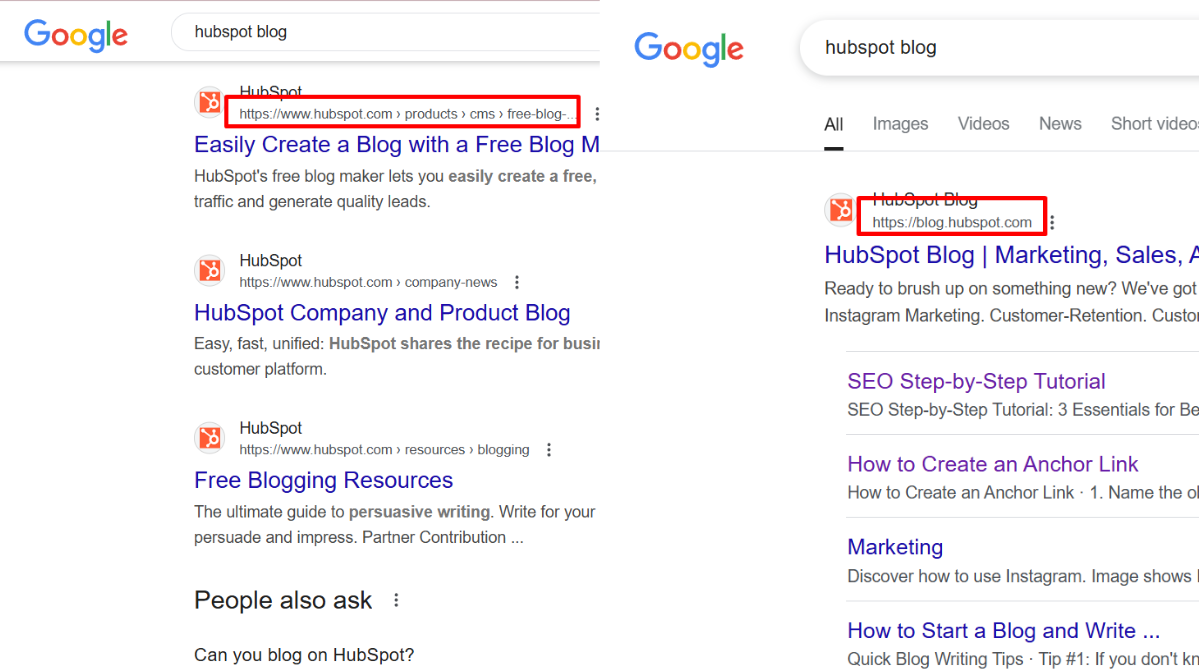
Some companies launch a main brand site alongside a niche-focused content hub. Both sites ranked for the same high-volume queries, and guess what? They doubled their visibility without doubling their effort.
That said, it’s not about gaming the system. You’ve got to offer genuinely distinct content and purpose across each domain. If you do that, you can create a kind of “search shelf space” that edges out the competition.
It’s a long game, but when you play it smart, the payoff can be enormous.
Drawbacks and risks of managing multiple domains
As exciting as managing multiple domains sounds, it’s not all smooth sailing.
I've seen businesses jump in headfirst without a plan, only to find themselves neck-deep in SEO headaches and operational chaos.
1. Duplicate content issues
The dreaded duplicate content trap.
This is easily one of the biggest technical snags I see with clients running multiple domains. Let’s say you copy and paste your main site’s content across several domains to try and cover more ground.
Google isn’t fooled.
Instead of boosting your visibility, it could tank your rankings altogether, as search engines struggle to decide which version to trust or index.
Large international companies experience this quite often.
Many large multinational companies often have their HQ publish one article and have their local offices just publish the exact same article under their local subfolders without any changes. Naturally, a lot of content duplication issues will occur.
Now, while this example is describing an issue that occurs within the same site, the same thing can occur on different local sites if you do the same thing.
There are ways to keep things clean:
- Localize your metadata
- Localize your content with local examples and case studies
- Implement self-referencing canonical tags
I’ve used them countless times to consolidate value and avoid messy penalties.
2. Diluted SEO effort
When your SEO strategy is spread across multiple domains, you can easily end up watering down your authority. Instead of building one powerhouse, you’re splitting backlinks, social signals, and content relevance across two or more sites.
I’ve seen this mistake cost companies dearly, especially when they launch new domains without a clear plan or purpose. You end up doing double the work for half the return.
From a consulting perspective, I always caution clients to consider the long-term SEO maintenance involved. Tracking metrics across multiple properties, optimizing each one, ensuring consistent schema markup, and auditing backlinks regularly - it all adds up.
Unless you’ve got a dedicated team or a big enough budget to back the effort, you're risking a fragmented strategy that rarely delivers lasting value.
3. Increased operational complexity
Let’s talk logistics.
Managing just one domain can be a juggling act. Now multiply that by three or more. You’re dealing with multiple DNS records, separate hosting environments, different expiration dates, and potentially even diverse CMS setups. It’s not impossible, but it’s certainly not simple.
Over the years, I’ve had to rescue several clients from situations where just keeping track of login credentials became a full-time job.
Branding also takes a hit when the message isn’t tightly controlled. A fractured domain ecosystem can confuse users and dilute your brand identity if the look, tone, or messaging isn’t aligned across the board.
4. Higher financial costs
Domains aren’t that expensive on their own, but multiply that across several years, add premium names, hosting, SSL certificates, email accounts, and suddenly the bill looks hefty.
I’ve seen startups overspend on domain hoarding before validating their business idea. It’s money that could’ve gone into product development, marketing or content creation.
Beyond registration fees, there’s also the hidden cost of maintaining those domains. Whether it’s updating outdated plugins, renewing hosting packages, or paying writers to keep each domain’s content fresh, the cumulative price tag adds up fast.
I always advise clients to treat domains like digital real estate - only buy what you can afford to manage well.
SEO best practices for managing multiple domains
1. Use 301 redirects thoughtfully
If there's one piece of advice I’ve repeated more than any other in multi-domain strategy meetings, it’s this: use 301 redirects with care.
Redirecting typo domains or legacy URLs to your main site can absolutely help consolidate authority, but if you start redirecting dozens of domains without strategic alignment, you're asking for trouble.
A well-placed 301 from a commonly misspelled domain is useful. But dumping a pile of unrelated or weak domains into your primary one? That’s just digital clutter with potential consequences.
2. Avoid penalized or low-quality domains
I’ve come across clients excited to redirect old or expired domains they've scooped up on the cheap, thinking it's a quick win.
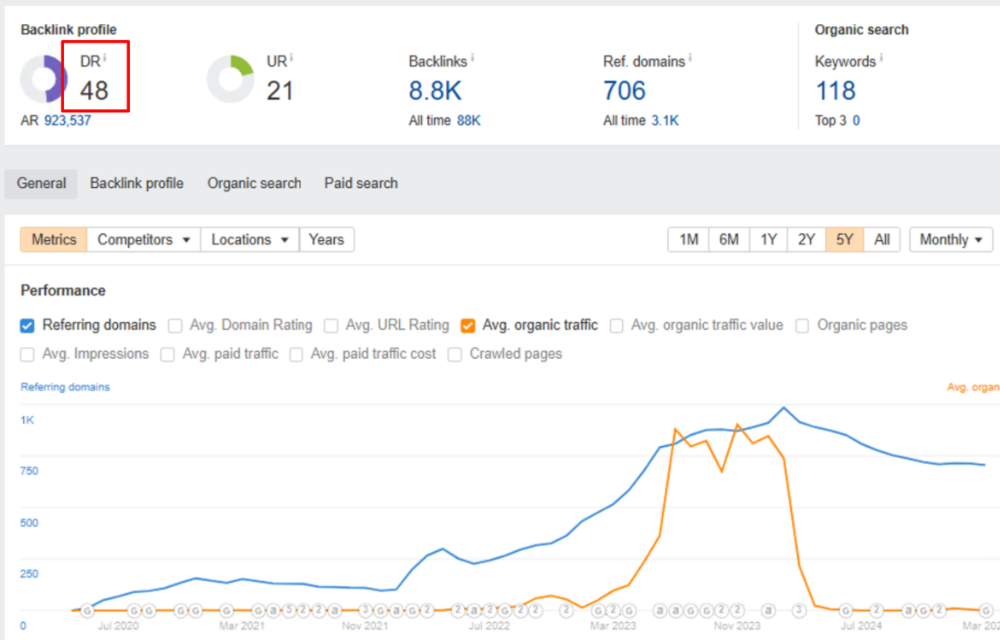
But if those domains have a sketchy backlink profile, a spammy history, or were previously penalized, you could inherit their baggage and poison your own SEO performance.
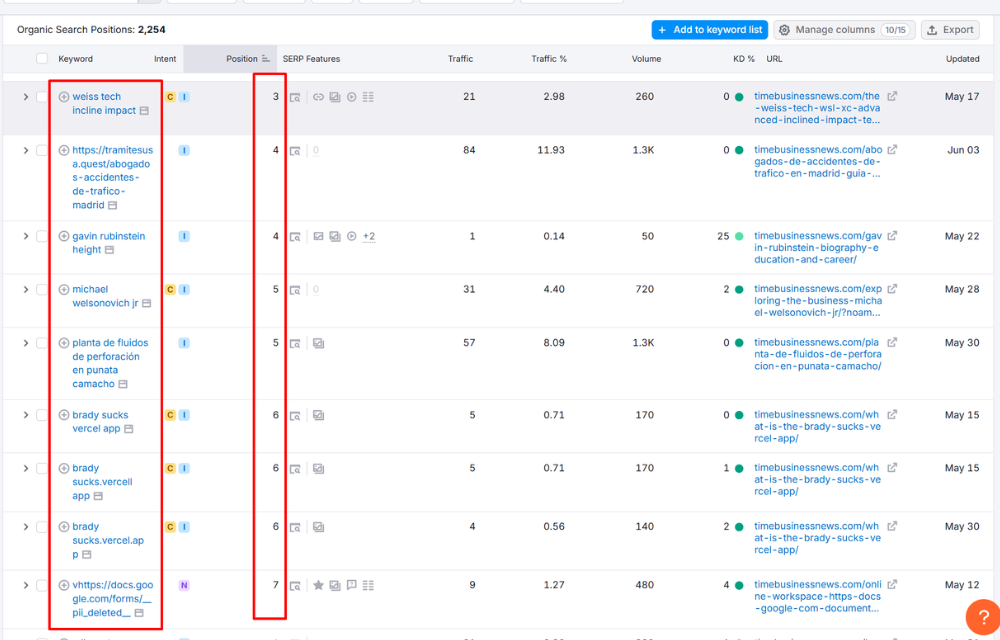
Some telltale signs of a poor-quality domain:
- Sharp decline in organic traffic - Indicator of poor content quality published purely for trying to get rankings
- Sharp increase in the number of referring domains - Indicator of spammy linkbuilding practices focused on growing the quantity of backlinks instead of focusing on quality
- Ranking for weird keywords - A classic move of guestposting sites is to rank for longtail queries that have zero relevance to the niche their site is supposedly in
Before you hook any domain into your ecosystem, it’s worth running a deep background check. Think of it like vetting a new hire for your brand.
3. Avoid shady redirect tactics
Google’s not easily fooled.
I’ve seen businesses try to use misleading redirects by masking affiliate links or cloaking unrelated domains to funnel traffic. And almost always, it ends with penalties or loss of trust.
Even if it works short-term, the risk of long-term damage just isn’t worth it.
Transparent redirects that align with user intent and branding are the only real way to stay on the right side of both Google and your audience.
4. Canonicalization & content differentiation
If you’re running multiple domains with overlapping content, canonicals can help, but they’re not a cure-all.
I always recommend giving each domain a clear reason to exist.
Whether it’s targeting a unique audience, offering location-specific services, or highlighting a niche product line, Google needs to understand the value of each domain on its own.
Otherwise, you risk falling into the thin content trap, and trust me, clawing back rankings from there is no picnic.
5. Leverage cross-domain analytics
I can’t count how many times I’ve audited setups where cross-domain tracking was either broken or never implemented.
When you’re juggling multiple domains, seeing how users flow between them is crucial to understanding what’s actually working. Google Analytics and Tag Manager can make this seamless, but only if set up correctly.
With solid tracking in place, you’re making decisions backed by real behavior across your entire digital footprint.
Hosting and technical considerations
Multiple domain hosting solutions
Managing multiple domains under one roof doesn’t have to be a logistical nightmare. With the right hosting setup, it’s surprisingly smooth.
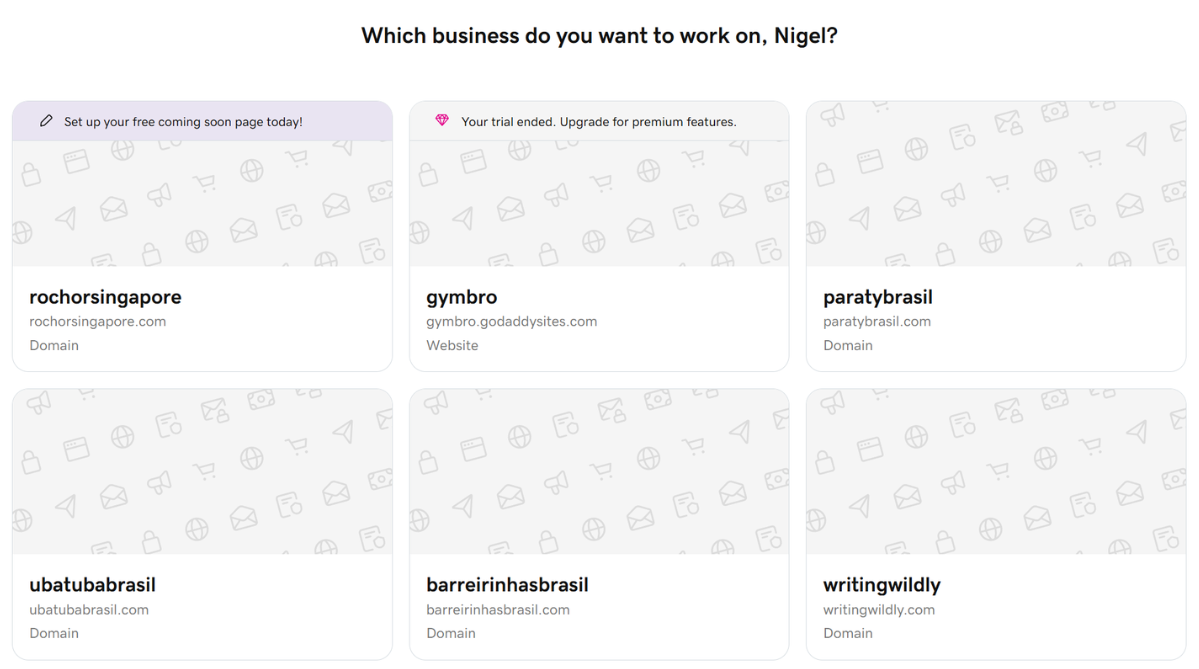
Personally, I’m a fan of using platforms like GoDaddy that offer centralized dashboards. They simplify oversight without sacrificing flexibility. Whether you’re working with cPanel or a fully managed hosting solution, the key is scalability.
Here’s a quick rundown of managing multiple domains with GoDaddy:
- Bulk domain input – lets you check or enter up to 500 domains at once, saving time
- Bulk pricing and savings – discounts apply automatically when registering or transferring multiple domains
- File upload support – accepts CSV, XLS, or XLSX formats for easy bulk operations
- Advanced filtering tools – filter by TLD, match type, or premium domains for targeted management
- Bulk privacy & protection – add domain privacy services to all selected domains in a single step
- Free domain privacy included – personal information is hidden in WHOIS records at no extra cost
- Centralized domain control – keep all your domains in one dashboard for easy monitoring, forwarding, subdomains, etc.
- Automated transfers – fully backgrounded bulk domain transfer process reduces manual effort
- Real‑time monitoring & management – GoDaddy tracks your domains’ status and uptime automatically
- Integrated domain‑investing tools – includes appraisal, auction, parking, and brokerage services for monetizing portfolios
- Extensive TLD selections – access over 500 domain extensions in one platform
- 24/7 award‑winning support – global customer service, guides, and resources available around the clock
Security and resource allocation
Here’s where things get real: security across multiple domains is mission-critical.
I’ve seen clients use shared hosting to save a few bucks, only to watch a malware infection on one domain compromise their entire network.
It’s not just risky, it’s reckless.
Each domain should have isolated environments where possible, backed by firewalls, active SSL, and regular patching. That extra layer of protection might not seem flashy, but it’s the difference between sleeping soundly and scrambling during a breach.
When should you use multiple domains?
1. For distinct brands or subsidiaries
If your business operates several brands or subsidiaries that target different audiences, using separate domains can be a strategic move.
I’ve advised clients in such scenarios to treat each domain as its own identity, complete with tailored messaging and branding, to avoid confusing customers or diluting the brand experience.
When the audience or brand personality diverges significantly, multiple domains help keep things clean and focused.
2. For international SEO
When expanding globally, country code top-level domains (ccTLDs) like .in for the India, .uk for the UK, or .de for Germany are invaluable.
From my experience, ccTLDs not only help with geotargeting but also build trust with local audiences and comply with regional regulations.
Plus, managing domains this way simplifies language and legal requirements, avoiding the pitfalls of a one-size-fits-all global website.
3. For high-impact marketing campaigns
Launching a new product, running a seasonal campaign, or rebranding? In these cases, a dedicated domain can work wonders for focus and tracking.
I’ve seen marketing teams use standalone campaign domains to deliver a crisp, distraction-free message while keeping their main site pristine. It’s a way to capture attention without muddying your core brand narrative.
4. To acquire more SERP real estate
Owning multiple domains can carve out more space on search engine results pages if handled ethically and strategically.
From where I stand, this tactic requires careful differentiation between sites to avoid cannibalizing your own rankings. When done right, multiple domains let you dominate competitive keywords and secure a larger share of the online spotlight, providing a genuine edge over competitors.
When to stick with a single domain?
If you’re working with tight budgets or limited resources, juggling multiple domains can quickly become overwhelming and costly.
From my years in SEO consulting, I’ve found that focusing your efforts on one solid domain often yields better returns without stretching your team too thin.
When your products or audiences overlap significantly, splitting them across different domains risks confusing customers and fragmenting your brand voice.
I usually recommend keeping related offerings under one roof to maintain clarity and build stronger recognition.
Consolidating authority into a single domain simplifies your SEO strategy, helping you build stronger link equity and clearer signals, which ultimately boosts your site’s overall visibility.
Strategic alternatives to multiple domains
1. Use subdomains or subdirectories
Choosing between subdomains and subdirectories often depends on your goals and technical setup. From what I’ve seen, subdirectories (like example.com/blog) benefit from inheriting the main domain’s authority, making them easier to rank and manage under a unified SEO strategy.
Subdomains (blog.example.com), on the other hand, are treated more like separate sites by search engines, which can be useful if you want clear content separation but might require more SEO effort to build authority independently.
2. Microsites under main domain
Microsites hosted under your primary domain strike a great balance, offering focused content areas while keeping the power of your main site’s domain authority.
I’ve found this approach especially effective for targeting niche audiences or specific campaigns without confusing users or diluting SEO value.
By maintaining control over branding and messaging, you ensure consistency, which is key to building trust and recognizability online.
3. Best practices checklist
Here are some quick tips before deciding to purchase multiple domains
- Check domain history – review past ownership, backlinks, and penalties to avoid SEO baggage
- Use 301 redirects – preserve link equity and direct traffic smoothly from secondary domains
- Maintain consistent branding – unify messaging across domains to build trust and recognition
- Conduct regular SEO audits – monitor performance to catch issues like ranking drops early
- Invest in secure, reliable hosting – protect domains from downtime and cyber threats to maintain trust
Final verdict: is managing multiple domains a power move or pitfall?
Managing multiple domains can definitely be a powerful move when done with clear strategy, offering benefits like brand protection, targeted audience reach, and increased SEO opportunities.
However, it’s not without pitfalls. Duplicate content risks, higher costs, and operational complexity can quickly outweigh the gains if you’re not careful. The real secret lies in aligning your domain approach closely with your brand identity and SEO objectives, ensuring every domain serves a distinct, valuable purpose.
If you’re ready to take control of your digital presence and safeguard your brand across multiple fronts, registering those extra domains is a smart step.
With GoDaddy’s reliable and user-friendly services, you get seamless domain management, strong security, and expert support, making it easier than ever to harness the full potential of multiple domains without the headache.
Trust me, investing in the right hosting partner like GoDaddy can turn your domain strategy from a risk into a real competitive advantage.








